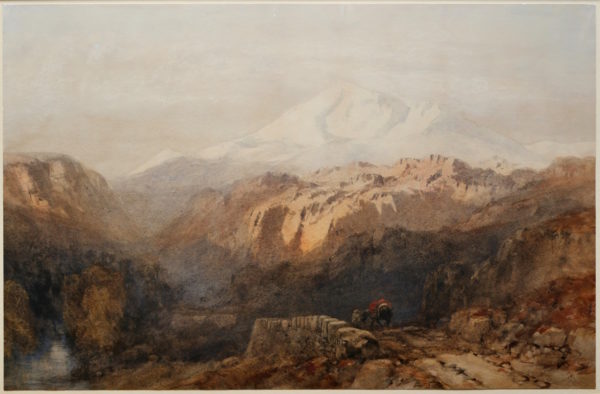Evans, William, of Bristol (1809-1858)
Known as William Evans of Bristol or Welsh Evans. William was taught drawing in Bristol by Francis Danby, and between 1827-32 was himself giving drawings lessons in Clifton. From 1832-3 he became a member of a sketching club which included W.J. Muller and J.S. Prout. From 1844 Evans became one of the first resident painters at Betws-y-coed, the artists’ colony popularised by David Cox. He was elected associate of the O.W.S. in 1845, where he exhibited until 1859. He travelled throughout Britain, and in 1852 spent the winter in Italy. He settled in London c.1854.
Wishing to perfect his art by the study of nature alone, and to free himself from the influence of schools or individuals, Evans made himself a home for many years in the centre of a grand gorge of mountain scenery in North Wales, at a farm called Tyn-y-Cai, in a large park at the junction of the River Lledr with the River Conwy, near Betws-y-Coed. Here he was able to cultivate a natural impulse for originality and grandeur in the constant contemplation of nature in some of its wildest forms, and he produced some fine works, notably Traeth Mawr; his treatment of the mountain torrents and the cottage scenery of the neighbourhood was also remarkable. William James Müller, a friend from his Bristol days, joined him in painting this area on a visit of 1842.
After 1852 Evans visited Italy, spending the winter successively at Genoa, Rome, and Naples, and he collected numerous materials for working up into landscapes of a very different character from his earlier productions.
His work was cut short by illness, and he died in Marylebone Road, London, on 7 December 1858, aged 49. There is a fine water-colour drawing by him in the print room at the British Museum.
Showing the single result
